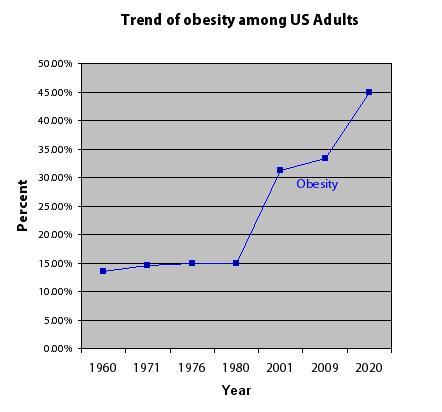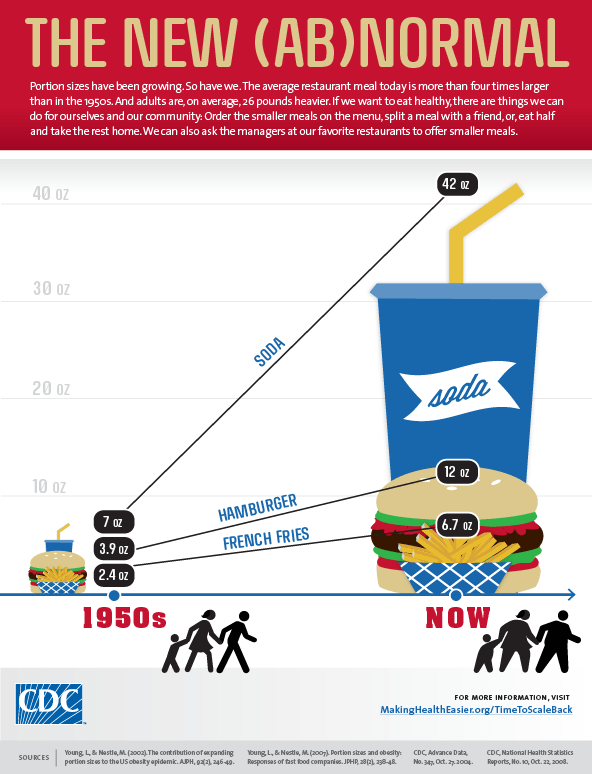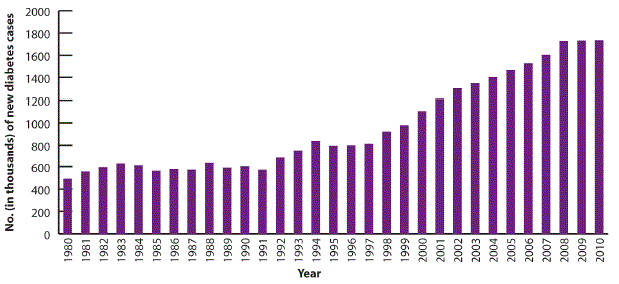As an everyday part of my sleep practice, I often see patients who complain of problems falling asleep due to symptoms in their legs when they get in bed. It can be anything from “restlessness” to “deep pain” in the legs, but almost always follows a typical pattern. What these patients suffer from is called Restless Leg Syndrome (RLS), and it is more common than you may think. Lets learn a little about it, and investigate whether or not diet can either lead to, or relieve the symptoms of this often misunderstood condition.
Epidemiology: The numbers vary widely in the literature as far as the overall prevalence of RLS across the population, but it’s safe to say 5-10% of Americans suffer from some form of RLS throughout their lives. Importantly, this is not just a disease of adults, as it is felt that the overall prevalence is similar in children as well. In these children, RLS symptoms are often misdiagnosed as “growing pains” and the sleep disruption it causes often leads to night after night of unrestful and disjointed sleep. When adults get tired we get sleepy, when kids get tired they get cranky, agitated, disruptive, and even hyper. Needless to say, many experts believe unrecognized RLS in kids could account for a good number of cases labeled as ADHD. As in many things in sleep medicine, this remains controversial.
Pathogenesis: RLS can be grouped into two main categories, as can many disease states; it is either primary or secondary.
–Primary RLS is idiopathic, meaning there is no real identifiable cause. Observational studies point to it being a genetic disease with autosomal dominant inheritance. The underlying genetic defect occurs somewhere in the metabolism of dopamine in the central nervous system, although imaging studies using SPECT and PET imaging of dopamine producing areas have produced often conflicting data. Given that Parkinson’s disease is clearly known to be related to dopamine defects in the CNS, and the fact that Parkinson’s medicines have been successfully used to treat RLS, this is an important area of current research in Neuroscience.
–Secondary RLS is felt to be caused by a number of other conditions; in other words, RLS is a symptom of these problems. Here are a few of the most common (and the one we are most interested in).
-Iron Deficiency – Since the original description of RLS, iron deficiency has been considered one of the most likely causes. Study after study have consistently showed decreased iron stores (ferritin) in RLS patients vs. controls. MRI estimates of brain iron concentration in the substantia nigra (the area that makes dopamine) have also been consistently lower in RLS patients. That said, these findings are FAR from universal, so it is only part of the story.
–End-Stage Renal Disease – If you take care of hemodialysis patients for very long, you quickly hear the same complaints of RLS pop up time after time. The cause of RLS in these patients has many theories, from iron deficiency to low parathyroid hormone (PTH) levels. Research is ongoing.
–Diabetes Mellitus – RLS often co-exists with peripheral neuropathy and can be quite debilitating.
–Multiple Sclerosis – The data on RLS and MS is in its infancy, but I can tell you that over half of my MS patients have clear RLS. There is a connection.
–Parkinson’s Disease – Although dopamine is related to both conditions, studies have failed to consistently find a link between RLS and Parkinson’s. This is frustrating as both disorders clearly point to the substantial nigra in the CNS as to location of disease. Our hope is that a breakthrough in one disease will lead to a ray of hope in the other. Only time will tell…
-There are many other disease states related to RLS, and often listed in the miscellaneous file are vitamin deficiencies and obesity. We’ll talk more about them later.
Clinical Manifestations and Diagnosis: Here is how UpToDate.com describes RLS.
Although the subjective symptoms of RLS are often difficult to describe, the clinical features are highly stereotyped. The hallmark of RLS is a marked discomfort in the legs that occurs only at rest and is immediately relieved by movement. The abnormal feelings are typically deep seated and localized below the knees. Distribution is usually bilateral, but some asymmetry may occur and the arms can be affected in more severe cases.
Terms that patients use to describe the symptoms include crawling, creeping, pulling, itching, drawing, or stretching, all localized to deep structures rather than the skin. Pain and tingling paresthesia of the type that occurs in painful peripheral neuropathy are usually absent, and there is no sensitivity to touching of the skin.
Symptoms typically worsen towards the end of the day and are maximal at night, when they appear within 15 to 30 minutes of reclining in bed. In severe cases symptoms may occur earlier in the day while the patient is seated, thereby interfering with attending meetings, sitting in a movie theater, and similar activities. In milder cases patients will fidget, move in bed, and kick or massage their legs for relief. Patients with more severe symptoms feel forced to get out of bed and pace the floor to relieve symptoms.
The International Restless Legs Study Group proposed the following four features as essential criteria for the diagnosis of RLS:
1) An urge to move the legs, usually accompanied or caused by uncomfortable and unpleasant sensations in the legs. Sometimes the urge to move is present without the uncomfortable sensations, and sometimes the arms or other body parts are involved in addition to the legs.
2) The urge to move or unpleasant sensations begin or worsen during periods of rest or inactivity such as lying or sitting.
3) The urge to move or unpleasant sensations are partially or totally relieved by movement, such as walking or stretching, at least as long as the activity continues.
4) The urge to move or unpleasant sensations are worse in the evening or night than during the day or only occur in the evening or night. When symptoms are severe, the worsening at night may not be noticeable but must have been previously present.
Dietary Treatment: There are tons of resources on the internet about standard pharmacologic treatment of RLS, and that is not the main topic of this post. What we are going to look at now is common non-pharmacologic treatments for RLS, in particular diet related treatments. Let’s see where this takes us!
According to the RLS Foundation there are multiple foods that should be avoided in order to minimize or eliminate RLS symptoms. These include caffeine, alcohol, ice cream, as well as pasta and bread.
Now you all know this is a Paleo blog, and are you seeing what I just saw? Pasta and bread??? Why? We all know why…say it with me…GLUTEN!
Both Celiac Disease(CD) and Gluten Sensitive Enteropathy (GSE) lead to abnormal small intestine mucosa due to inflammation. This inflammation leads to malabsorption, and this is the pathway which connects it with RLS. We saw above that a classic cause of secondary RLS is iron deficiency anemia. We all know gluten is indigestible by the human small intestine, and it causes some degree of inflammation for anyone who eats it. People with CD or GSE have pathologic inflammation in their gut, thus making it impossible for them to appropriately absorb dietary iron. Give these people long enough and their ferritin and iron levels get low enough to put them at risk for developing RLS symptoms.
So how related are CD and RLS? Lets look at some clinical data for answers. One study showed the incidence of RLS in CD patients to be 35%, of these, 40% also had iron deficiency. In another study, 31% of CD patients had RLS vs only 4% of the control group. Also, iron levels in this study were statistically significantly lower in the CD patients with RLS than in those without the disease. BUT, after all was said and done, no clear correlation was found in this study between RLS and either a gluten free diet or iron metabolism.
Yet another study showed that GSE antibodies were NOT associated with RLS unless there was an associated underlying anemia. Everyone confused yet?! Let’s look at one more thing before we try to figure all this out.
Interestingly enough, another commonly recognized cause of secondary RLS is magnesium deficiency. Many people with RLS are amazed to see a rapid resolution of symptoms simply by taking OTC magnesium supplements…but not all get relief. Why do some get relief, and some not? Why do very controlled studies show some people get complete resolution of RLS symptoms when adapting a gluten free diet, and other get no relief at all?
Conclusion: Lets say your mom has RLS, and her mom had RLS, and her dad had RLS…what are your chances? I would say pretty good. In this case, there is clearly a autosomal dominant gene being passed down through the generations causing RLS. That gene leads to a yet unknown defect in dopamine metabolism in the substantia nigra of your CNS, and thus to your RLS. Gluten is no where in this picture! Although many want to believe that Paleo can fix everything, it simply can’t. Lets say one day your car stops running, and after checking it over you realize it’s just out of gas! You fill her up and she fires right up. I think we would all agree that your view is skewed if you believe that no matter what happens to your car, if it stops running, all you need to do is put gas in and it will work. Gas is not the only necessary part of your car to make it run! Likewise, gluten is just a piece of the puzzle.
That said, gluten can be and often is an important issue to address in RLS. What is the pathway to a gluten free diet improving RLS symptoms? First of all, you have to have RLS that is secondary in nature, not primary. Next, the cause of your RLS needs to be either iron deficiency anemia or magnesium deficiency. (I by no means believe these are the only two nutritional causes of RLS, but they are the most common and most studied) Now, if your iron or magnesium deficiency is caused by malabsorption from CD or GSE, you may be in luck! This pathway explains why we have such variable results in studies concerning gluten, iron metabolism, and RLS. For someone’s RLS to respond positively to a gluten free diet they not only need to have an underlying gluten problem, but that problem must also be leading to clinical iron or magnesium deficiency. If we look at one of the studies above where the incidence of RLS in CD patients was 35%, and only 40% of those had iron deficiency; that means a gluten free diet will likely only help 40% of 35% of the original study population! Even that is if you get 100% response to the diet in those who are “primed” to respond.
One of my biggest messages I try to get out through my blog is that although adapting a Paleo diet can do amazing things for your life and for your health, it can not substitute for traditional Western medicine in every instance. If your RLS is related to dopamine (in other words, genetically handed down), and you want relief of your symptoms, it’s best if you see your doctor and get a prescription for medicines that will increase dopamine in your CNS. You can go gluten free forever and never get the results that you need. Do not become single minded, it won’t get you anywhere but walking around at midnight again frustrated and tired.
In the end RLS is a very important cause of morbidity in America, and around the world. How do I use this information in my practice?
-In RLS patients I often recommend a trial of gluten free diet to see how symptoms respond, particularly in patients with no family history of RLS, or a positive family history of CD.
-In iron deficiency anemia patients who fail to respond to iron replacement, I often test them for CD as an underlying cause of malabsorption.
Think you may have RLS? Talk to your doctor or contact a local board certified sleep physician to get evaluated. I often used to tell patients that RLS would not kill them, it would just make them want to kill themselves. Recent data showing how short sleep times, in and of themselves, can increase overall mortality has me changing my tune. That topic though…is for another blog post in the future!
I hope this post finds you all well, God Bless.
Ernie
PS – Because it’s fun to share, I thought I might give yall my two favorite “home remedies” that I’ve heard over the years for treating RLS. Now please, I DO NOT RECOMMEND THEM, just sharing. One gentleman told me his best method was putting homemade charcoal in a sock, smashing it up a bit, and rubbing the sock all over his legs before bed time. The blacker his legs got, the better he said he slept.
This can only be outdone by the man who told me after years of experimenting, he found that rubbing paint thinner on his legs at bedtime led to a nice sound sleep…….. I quickly made sure neither he or his wife smoked! You just can’t make this stuff up…!
Sources:
Restless Leg Syndrome Foundation: About RLS
UpToDate.com Section on RLS
Dig Dis Sci. 2010 Jun;55(6):1667-73. doi: 10.1007/s10620-009-0943-9.
Celiac disease is associated with restless legs syndrome.
Weinstock LB, Walters AS, Mullin GE, Duntley SP.
Source Department of Internal Medicine, Washington University School of Medicine, St. Louis, MO 63141, USA
Mov Disord. 2010 May 15;25(7):877-81. doi: 10.1002/mds.22903.
Restless legs syndrome is a common feature of adult celiac disease.
Moccia M, Pellecchia MT, Erro R, Zingone F, Marelli S, Barone DG, Ciacci C, Strambi LF, Barone P.
Source Department of Neurological Sciences, University Federico II and IDC Hermitage Capodimonte, Naples, Italy.
Acta Neurol Belg. 2011 Dec;111(4):282-6.
Prevalence of gluten sensitive enteropathy antibodies in restless legs syndrome.
Cikrikcioglu MA, Halac G, Hursitoglu M, Erkal H, Cakirca M, Kinas BE, Erek A, Yetmis M, Gundogan E, Tukek T.
Source Department of Internal Medicine, Bezmialem Vakif University, Medical Faculty, Fatih, Istanbul, Turkey
Sleep Med. 2009 Aug;10(7):763-5. doi: 10.1016/j.sleep.2008.07.014. Epub 2009 Jan 12.
Celiac disease as a possible cause for low serum ferritin in patients with restless legs syndrome.
Manchanda S, Davies CR, Picchietti D.
Source University of Illinois at Urbana-Champaign, College of Medicine, 506 S. Mathews Avenue, Suite 190, Urbana, IL 61801, USA.






















































